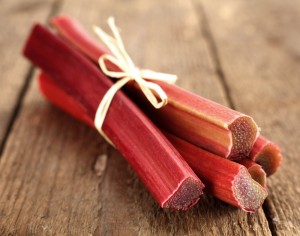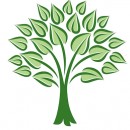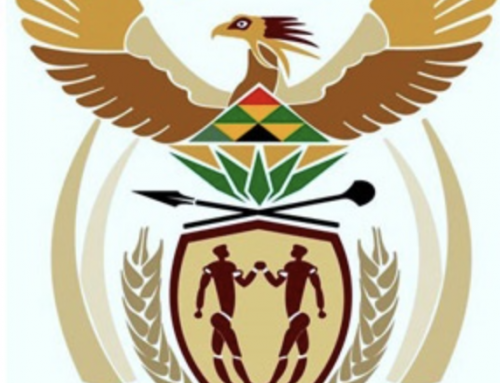
These medicines were found in medicine chests, glass and wall cabinets, which were also specified as mahogany medicine chests. They were also found in a shop as part of the house, or in the wine cellar, attic or an outside room. In some cases these remedies were just part of all their belongings and kept in a room of the house, or, as in the case with Jamilla van de Kaap (1821): her Hallesche medicine was kept in a black sugar pot.
The Hallesche medicine chests contained medicines prepared and distributed by the apothecary laboratory attached to the Orphanage in Halle, Germany, established in 1698. These medicines were well known to the German sick-comforters and apothecars employed by the VOC.
John Fredrik Häszner, a qualified doctor in the service of the VOC, came to the Cape in 1785. In his Huislijk Geneeskundig Handboek, (1793) he lists herbs and spices which he prescribed for various ailments. They correspond with the items in the inventories such as:
Aloe
Alum
Almonds
Aniseed
Turmeric
Camphor
Cardamom
Ginger
Kina
Coriander
Mustard
Olive oil
Sweet oil
Hallesche red powder
Rhubarb
Crème of tartar
Raisons
Saffron
Tamarind
Cinnamon
Lavender, rhubarb, camphor, rosemary, nutmeg, peppermint, clove and liquorice are also listed in the inventories as being used to make the following Dutch medicines: Haarlemmer drops, wonder essence, milt essence, balsam tillie and Hoffmans drops, which formed part of the household items. Spices from the East such as tamarind, cardamom, cinnamon, saffron, ginger and nutmeg were therefore not only used for cooking, but also in the preparation of medicines. The English became acquainted with these medicines through the Dutch, hence the reference to Dutch medicines. John Elliot owned 3 bottles of Hollandsche drops, inventoried in 1823. Häszner also makes reference to woman’s illnesses in his Guidebook. Almond milk was recommended as a pain reliever and saffron tea for restlessness after childbirth. A well known remedy, prescribed by Häzner, is the use of warm cabbage leaves on a woman’s breast to relieve milk fever.
The inventories seldom mention the use of a remedy. One exception was Carel Hendrik Buijtendag who brought 32 pieces of snakewood for gallbladder fever from Batavia (1780). Snakewood is an East Indian creeper and has a bitter taste – it was also used as an antidote for snake venom. It is interesting to note that the folk had several remedies for snakebite.
 A snakestone and two crayfish eyes were found in the room on the ‘right’ side belonging to Elizabeth Gouws (1800). Snakestone, often found in the inventories of the more affluent, was imported from Malabar. It has minute pores and a pale ash grey speck in the middle. The speck is held up against the puncture of a snake bite until saturated with poison. Crayfish eyes had medicinal value in earlier times and were used for healing inflamed sores. It was also used in eyewash and in toothpaste. Another stone found in the inventories is bezoar, a red stone found in the bodies of certain animals. Bezoar, a remedy against poison and contagion was taken internally in powder form as well as worn around the neck. An example of bezoar in powder form is in one of the inventories: “flesjes pulvis bezoardicus”. Johannes Henricus Blankenberg (1773) owned a jar with bezoar and 20 jars turlington, 8 jars English bitter, vaderlandse drop, 23 jars essentia dulcis, 20 jars pulvis antispasmodicus, flierconserve, 1 packet fermillioen, 1 case Hallesche medicine and 2 jars salt tincture.
A snakestone and two crayfish eyes were found in the room on the ‘right’ side belonging to Elizabeth Gouws (1800). Snakestone, often found in the inventories of the more affluent, was imported from Malabar. It has minute pores and a pale ash grey speck in the middle. The speck is held up against the puncture of a snake bite until saturated with poison. Crayfish eyes had medicinal value in earlier times and were used for healing inflamed sores. It was also used in eyewash and in toothpaste. Another stone found in the inventories is bezoar, a red stone found in the bodies of certain animals. Bezoar, a remedy against poison and contagion was taken internally in powder form as well as worn around the neck. An example of bezoar in powder form is in one of the inventories: “flesjes pulvis bezoardicus”. Johannes Henricus Blankenberg (1773) owned a jar with bezoar and 20 jars turlington, 8 jars English bitter, vaderlandse drop, 23 jars essentia dulcis, 20 jars pulvis antispasmodicus, flierconserve, 1 packet fermillioen, 1 case Hallesche medicine and 2 jars salt tincture.
Amongst the belongings of Henry Rutt (1798) a buyer, were remedies such as lavender, chamomile, camphor, sponges, castor, arsenikom albon, juniper berries, bergamon essence, nux vomica, quick silver, linseeds to name but a few. Arsenicun album is based on a version of arsenic oxide which has fascinated both healers and poisoning murderers for many decades. Nux vomica is made from the seeds of the poison-nut tree and is both a first-aid remedy and a long term treatment for many digestive problems. Mercurius is prepared from quick silver treating infected or septic states. The powdered skeleton of the common sponge, a sea animal, produces the remedy spongia, which has an effect on the respiratory system. The chamomile which was imported also grew in the months of November and December on the Cape Flats . It contains a superfluity of volatile oil, is an excellent antispasmodic and most useful in colic. (L. Pappe, 1857:21)
The application of certain herbs also leads to poisoning. Häszner refers in his guidebook to the quacks of this period which caused more deaths with their remedies. There were many instances of ignorance. Many folks owned “uyntjes ijsters” which they used to dig up water lilies and other bulbs such as water hawthorn. Van Joost Lons (1692) owned “1 yser om Hottentots uijntjes op te graven.” The poisonous effects of certain bulbs led to an incident in the Hantam in 1852 – a party consisting of three Khoi, two women and one male slave who ate of the bulbs were seized with nausea a half hour after eating it, severe vomiting and a prostration of strength followed. Wild dagga, sweet oil, milk and everything good were administered immediately. The male slave pulled through, but the three Khoi and one woman died. The one woman who pulled through ascribed her survival to the fact that she had only eaten one bulb. (L. Pappe, 1857:38)
Medicines sent from Europe were extremely expensive and folk in remote parts of the country did not have access to apothecaries. The European settlers were often without their necessary stock of medicines and had to learn from their Khoi neighbours. (L. Pappe, 1857:19)
Consequently many useful remedies were discovered through the use of indigenous plants of Africa. Well-known indigenous remedies found in the inventories, apart from aloe, are buchu, green tea, devils claw and rue. Few indigenous plants were so much in use as the Khoi fig. The juice of the succulent leaves was taken internally and has a soury taste. It was widely used externally for its antiseptic properties. Its fruit had been referred to as Rose of Jericho, also mentioned in one of the inventories. The water in which this fruit was soaked was given to women nearing childbirth, to procure an easy delivery. Buchu in all its forms is mentioned during this period in the inventories: a bag with dry boecko, boegoe brandy and buchu vinegar. Buchu leaves has an aromatic volatile oil and a slight bitter taste used for rheumatism, gout and other inflammatory diseases. Buchu vinegar and buchu brandy are excellent for sprains and rheumatic pains. Vinegar and alcohol were extensively used internally and externally mixed with herbs and spices for several ailments. During Gordon’s travels in the 18 th century, he learnt from the Khoi that they were acquainted with boegoe and they used it to powder their bodies.
Andrew Sparrman refers to the health benefits of the warm baths of the Cape, used in conjunction with buchu and wild dagga (1772-1776). Häzner who owned an estate named Warme Bad in the Swartberg over the Hottentots Holland mountains, also recommended the use of the hot springs for rheumatism, the effect of this enhanced by drinking elder tea (1820).
The health benefits and demand for certain remedies from the East led to their cultivation on our continent. The camphor tree had been brought from the East Indies and planted here. Turmeric (curcuma longa) was also cultivated in a small bed in the Company’s garden (J. Pinkerton, 1814:70). Both appear often in the inventories. Apart from plants being used as remedies, rhinoceros horns were kept by some folk for certain diseases and for detecting poison.
Shavings of the horns were taken internally and used to cure convulsions and spasms in children (J. Pinkerton, 1814:52).
The commercialization of remedies can be observed in the inventory of a farmer, Gideon de Jager, who sold 3000 lb aloe to monsieur Maynier and delivered 2400lb aloe in 1778 to Pieter de Hoog to sell. Aloe was used internally to break a fever and externally, mixed with ash, to stop wounds from bleeding.
A variety of oils were used: Florentine oil, linseed oil, sweet oil, coconut oil, French oil, jasmine oil, spermacety oil, nutmeg oil, juniper oil and cajeput. Lavender water, cinnamon water, seltzer water (a bubbling water containing salt, calcium and magnesium carbonates), spa water and eau de cologne make their appearances in these households.
Castor oil is universally known and is daily prescribed around the globe as a purgative. Catharina Maria Blankenberg (1816) owned a bottle of castor oil, amongst her other medicines, eg. three pieces of snakewood, a bottle of cardemon, some leftover cinnamon and cloves and a drawer with “differente soorten onbekende medicynen”.
Captain Gregory Page (1819) owned 1 jar with cajeput oil. Apart from being an antiseptic and pain reliever, cajeput can be used for lung congestion, an ailment which was prevalent amongst some folk, because of poor living conditions.
It can be gathered from the above (and these are only brief examples) that the inhabitants of the Cape were very much reliant on the spices and medications that were available at the time. But so strong has been the effect on the culture of the Cape that many inhabitants today still swear by the advantages of many of these forms of medication.
MOOC 8: 1673-1826, work in progress.
Häzner, Frederich: Huijslijk Geneeskundig Handboek voor de Ingeseetenen van Nederlands Africa, 1793.
Pappa, L.: An enumeration of South African plants used as remedies by the Colonists of the Cape of Good Hope, 1857.
Pinkerton, John: Voyages and travels in all parts of the world, 1814.
Sparrman, Andrew: A voyage to the Cape of Good Hope, 1772-1776.
Author: Illona Meyer





